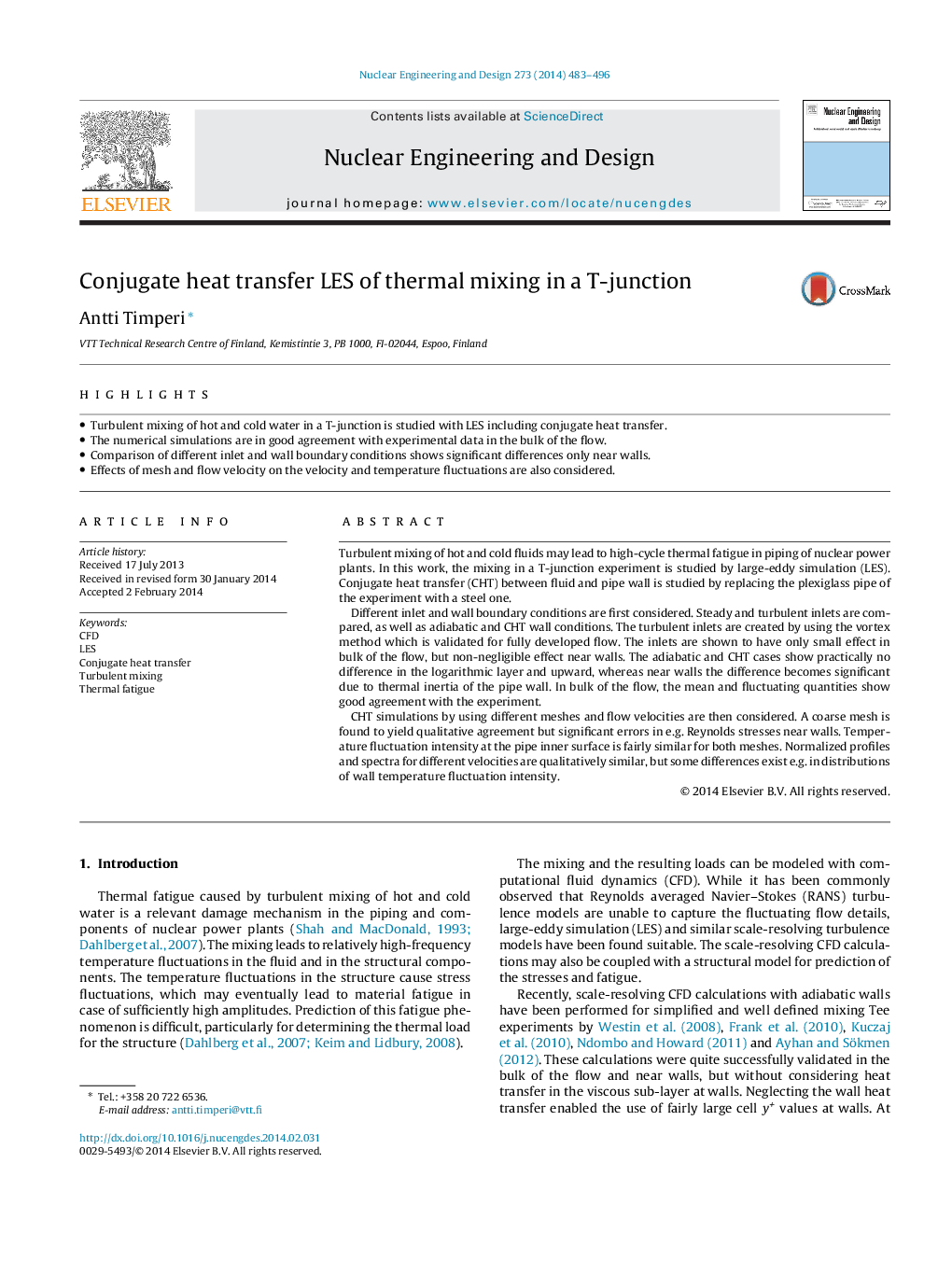| کد مقاله | کد نشریه | سال انتشار | مقاله انگلیسی | نسخه تمام متن |
|---|---|---|---|---|
| 296528 | 511728 | 2014 | 14 صفحه PDF | دانلود رایگان |

• Turbulent mixing of hot and cold water in a T-junction is studied with LES including conjugate heat transfer.
• The numerical simulations are in good agreement with experimental data in the bulk of the flow.
• Comparison of different inlet and wall boundary conditions shows significant differences only near walls.
• Effects of mesh and flow velocity on the velocity and temperature fluctuations are also considered.
Turbulent mixing of hot and cold fluids may lead to high-cycle thermal fatigue in piping of nuclear power plants. In this work, the mixing in a T-junction experiment is studied by large-eddy simulation (LES). Conjugate heat transfer (CHT) between fluid and pipe wall is studied by replacing the plexiglass pipe of the experiment with a steel one.Different inlet and wall boundary conditions are first considered. Steady and turbulent inlets are compared, as well as adiabatic and CHT wall conditions. The turbulent inlets are created by using the vortex method which is validated for fully developed flow. The inlets are shown to have only small effect in bulk of the flow, but non-negligible effect near walls. The adiabatic and CHT cases show practically no difference in the logarithmic layer and upward, whereas near walls the difference becomes significant due to thermal inertia of the pipe wall. In bulk of the flow, the mean and fluctuating quantities show good agreement with the experiment.CHT simulations by using different meshes and flow velocities are then considered. A coarse mesh is found to yield qualitative agreement but significant errors in e.g. Reynolds stresses near walls. Temperature fluctuation intensity at the pipe inner surface is fairly similar for both meshes. Normalized profiles and spectra for different velocities are qualitatively similar, but some differences exist e.g. in distributions of wall temperature fluctuation intensity.
Journal: Nuclear Engineering and Design - Volume 273, 1 July 2014, Pages 483–496